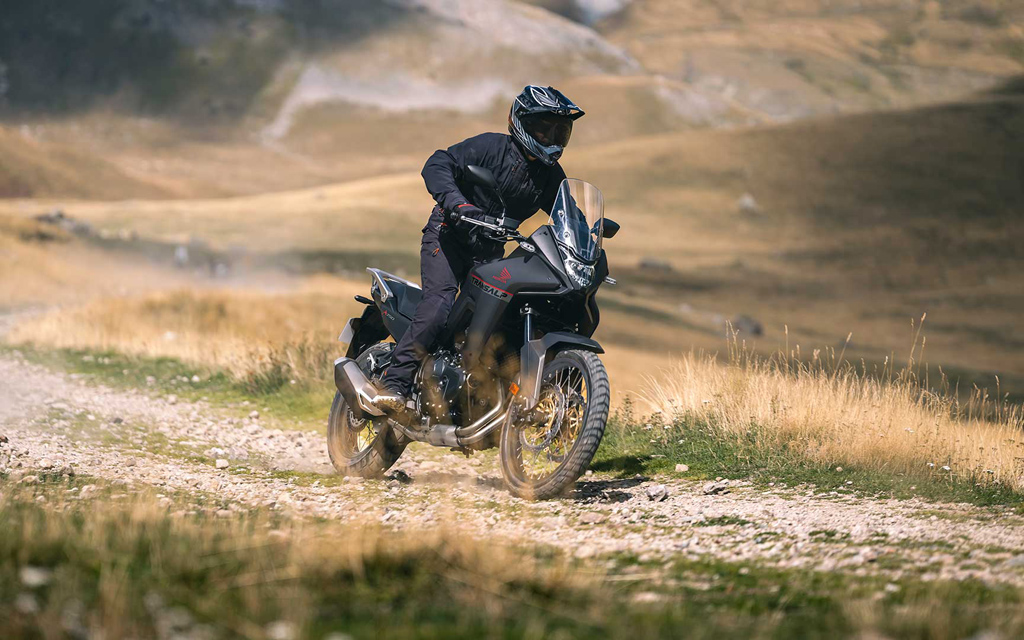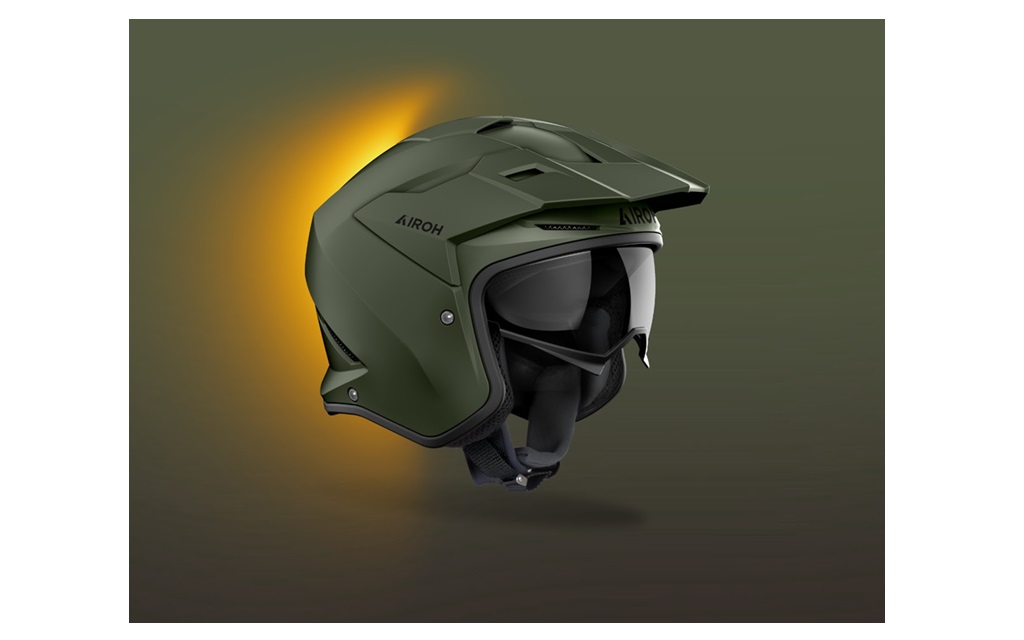Highly anticipated new Transalp set to deliver all-around, adventure seeking fun and performance
Honda Canada is excited to welcome the highly anticipated Transalp adventure motorcycle for the 2024 model year.
The original Transalp, introduced in 1986, has cemented its legendary status around the globe. It touts a rich heritage in the mid-size, adventure (ADV) category, where it’s renowned for its agility and ability to perform on the pavement and explore past the road’s end. Simply put, the Transalp is a brilliant all-rounder that leaves only one question unanswered: How far do you want to go?
“The all-new Transalp continues its legacy by offering an exciting balance between urban agility, on-road touring comfort and off-road ruggedness and capability,” says Ryan Kelly, Assistant Vice President Honda Canada Powersports. “The adventure motorcycle category continues to expand and with that we wanted to provide Canadians with more options as they look to explore offroad trails or city streets. The mid-size Transalp joins the lightweight CB500X and iconic Africa Twin, fitting perfectly between them in our stable of adventure seeking bikes.”
The Transalp is perfect for an extended touring trip or cruising urban boulevards. It’s at home slicing through trails, hills and mountain ranges and all points in-between. This is just what the new XL750 Transalp is built to do.

History
Although only offered in North America in 1989 and 1990, the original Transalp—powered by a 583cc V-Twin engine—is something of a legend in Europe, where it was introduced in 1986. Back then, its focus was as a smooth, comfortable do-it-all crossover that could cope with rougher ground thanks to long-travel suspension and light off-road dynamic. It came with spoked 18-inch rear and 21-inch front wheels for good performance in the dirt, and it as the first Honda adventure bike to be equipped with a fairing for improved comfort on the road.
Overview
The engine packs a great deal of Honda’s engineering prowess into a small space and provides strong response across the rev-range—just what’s needed for either solo or two-up touring. The all-new 755cc, parallel twin-cylinder unit produces good power and a strong helping of torque.
Compact, CRF Performance-derived Unicam eight-valve cylinder heads employ downdraft air intakes and Vortex flow duct to ensure optimal combustion. The 270° crank delivers feel and character. Electronic rider aids run via Throttle by Wire and include five riding modes, four of which contain pre-set combinations of Engine Power, Engine Braking, ABS and Honda Selectable Torque Control (HSTC) with integrated Wheelie Control. The fifth “User” mode allows the rider to fix his or her own preferred combination.
Handling is light, nimble and confidence inspiring. The steel diamond frame is light thanks to optimization of wall/pipe thickness and stiffness. For supple on-road performance and off-road bump absorption, suspension is top quality: a Showa 43mm SFF-CA inverted fork, and a rear shock operating through a Pro-Link system. Dual two-piston calipers provide efficient stopping power while the tires deliver versatility on or off-road.
The rich specification list is headlined by a 5-inch TFT color display which supplies vivid information delivery and management of all systems. All lighting is LED, and the indicators are self-cancelling.
Styling and Design
The Transalp’s design projects an unmistakable feeling of adventure touring in a package that works superbly on the road. The long-legged stance makes a strong statement of adventurous intent, while the fairing and screen work together to deliver wind protection without bulk. The overall look is sleek, simple and clean.
It has a purposeful look and feel, with zero excess and is built tough. For open visibility forward—and excellent wind deflection—the screen’s height has been carefully optimized. Its compact width also minimizes turbulence from “trapped” air.
This bike is built to go the distance, so genuine comfort matters. Seat height is low for the class at 855 mm (33.7 in) (a 20 mm lower seat is also available as an option), and the riding position is upright for natural control and leverage. The riding geometry also works well when standing up. A rear carrier is standard and there’s a USB socket under the seat.
Engine and Drivetrain
Honda’s development engineers set out to build a brand-new twin-cylinder engine to power the adventuresome Transalp. The resulting 755c, 8-valve Unicam engine with a bore and stroke set at 87.0 x 63.5 mm and with compression ratio of 11.0:1, is extremely compact and lightweight. It produces a hard hit of top-end power, which is accompanied by mountains of torque in the low to mid rpm range. The result is an engine that provides usable, enjoyable performance for rides of all types and all distances, and for riders of all experience levels.
For razor-sharp pick-up and throttle response, patented Vortex flow ducts create a more uniform distribution from the side scoops into the airbox, which then feeds downdraft intakes and 46mm diameter throttle bodies. To increase the engine’s efficiency, the cylinders use a Nickel-Silicon Carbide coating (Ni-SiC), as used on the CRF450R and CBR1000RR-R Fireblade SP.
The crank uses a 270° firing order for characterful, twin-cylinder pulse feeling. The exhaust note is tuned for a pleasing low-end beat and raucous top-end howl.
An assist/slipper clutch reduces clutch drag torque by 30%, for a lighter lever load and easier upshifts. It also manages rear-wheel hop under hard braking and rapid downshifts.
Technology
The instruments comprise a 5-inch, full-color, high-visibility TFT screen, which offers four types of speed/rpm display according to rider preference, as well as fuel gauge and consumption, riding mode selection and engine parameters, gear selected and customizable shift-up point on the rev-counter.
To simplify and miniaturize the entire electrical system, the Transalp uses a Controller Area Network (CAN) alongside a Body Control Unit (BCU). The BCU is sited on the lefthand frame rail, under the fuel tank and collectively processes control signals from the ABS modulator, TFT screen and switch gear.
All lighting is LED, and the turn signals are self-cancelling. The system compares front and rear wheel-speed difference and calculates when to cancel the indication relative to the situation.
Electronic Rider Aids
Throttle By Wire engine control offers four default riding modes—SPORT, STANDARD, RAIN and GRAVEL—adjusting the engine’s performance delivery and feel to suit conditions and the rider’s intent; they’re easily switched and managed between the left handlebar mode and TFT screen. There is also a specific USER mode that allows the rider to fine-tune his or her own personal settings.
There are four levels of Engine Power (EP), three levels of Engine Brake (EB), two levels of ABS, and five levels of Honda Selectable Torque Control (HSTC) available; HSTC and rear ABS can also be switched off. The riding modes offer different combinations of each parameter.
- SPORT mode offers maximum performance to deliver strong acceleration with minimum intervention.
- STANDARD mode is a mid-way setting for urban riding.
- RAIN mode is designed for challenging on-road conditions for the least aggressive power delivery.
- GRAVEL mode is a setting for confident travel on rougher terrain off road.
- USER mode allows the rider to choose between all available settings and to save them for future use.
A standard quick shifter allows for clutchless up and down shifts with auto blipper function, allowing for smooth and instant shifts.
Chassis and Suspension
The steel diamond mainframe is lightweight, at just 18.2 kg (42.3 lb) delivering a lightweight feel to the rider across all conditions, with confident handling agility. The integrated heavy-duty subframe employs high-tension steel tubing for strength and toughness.
Rake and trail are set at 27° and 111mm, respectively, with a wheelbase of 1560 mm (61.4 in) and curb weight of 208 kg (459 lb). Slow-speed U-turns are simplified thanks to a 42° steering angle and 8.6-foot minimum turning circle.
The suspension specifications have been selected with the all-around concept in mind, with long travel and superb bump absorption to deliver smooth performance and comfort on-road, and reassuring control off-road. A Showa 43mm SFF-CATM (Separate Function Fork-Cartridge) inverted fork offers 200 mm (7.9 in) of wheel travel and has spring preload adjustment; it mounts via a forged-aluminum bottom triple clamp and cast-aluminum top triple clamp, for a perfect balance of strength and rigidity in wide-ranging riding situations.
Compact, two-piston front calipers work dual 310mm “wave” discs. The rear 256mm “wave” disc is operated by a single-piston caliper. The stainless-steel, spoked 21-inch front and 18-inch rear wheels are fitted with tube-style 90/90-21 and 150/70R-18 tires; Metzeler Karoo Street or Dunlop Mixtour.
Accessories
A full range of accessories are available for the Transalp, ready for personalization to an owner’s preference and use, including a quick shifter and low seat option.
2024 XL750 Transalp
- Selling Price – $13,499 includes MSRP ($12,599) and Freight & PDI ($900)
- Colour: Mat Ballistic Black Metallic
- On Sale: September 20, 2023
Info: https://motorcycle.honda.ca/category/adventure
Source: Honda






